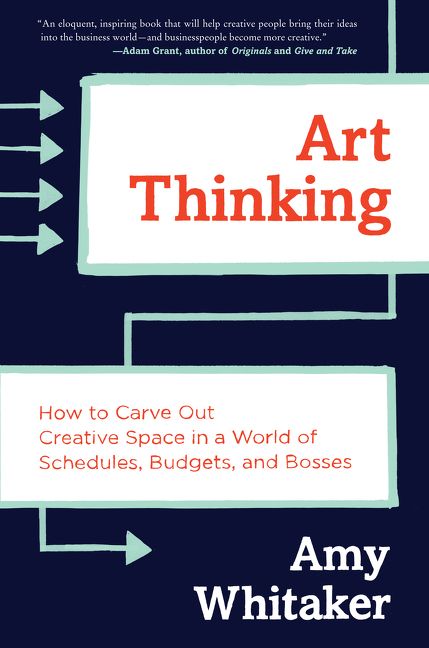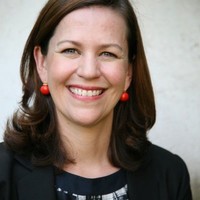Art Thinking Summary

4 min read ⌚
 How to Carve Out Creative Space in a World of Schedules, Budgets, and Bosses
How to Carve Out Creative Space in a World of Schedules, Budgets, and Bosses
“Art Thinking” by Amy Whitaker is an inspiring book which aims to help businesspeople become more creative, and creative people more business-oriented. It’s a thinking strategy which combines the best parts of both worlds, and which aims to help you convert your initial idea into a full-blown project. Regardless of whether you’re an artist or a businessman.
About Amy Whitaker
 Amy Whitaker is an assistant professor at New York University. She earned an MBA from Yale’s School of Management, before earning an MFA at University College London’s Slade School. Combining her knowledge from both fields, she is one of the world’s foremost experts in the relationship between art and business.
Amy Whitaker is an assistant professor at New York University. She earned an MBA from Yale’s School of Management, before earning an MFA at University College London’s Slade School. Combining her knowledge from both fields, she is one of the world’s foremost experts in the relationship between art and business.
She has also authored another book, titled “Museum Legs.” See more at: http://www.amywhit.com/
Art Thinking Summary
Let us guess: if you’re interested in business, poetry is not your cup of tea. And, of course, if you like art, business is not exactly something which gets your juices flowing!
Well, in this day and age, neither is really a smart decision.
Creativity is highly regarded in the world of business, and it seems that companies who know this, do much better than the rest. On the other hand, regardless of whether you want to put on a play or publish a book, it’s good to have some business smarts, unless you want to end up the archetypal desolate living-on-the-streets artist.
“Art Thinking” is the way to make the most of both art and business. It’s a method devised by Amy Whitaker, who should know more than most. In fact, she has grades in both business and painting, and teaches the latter to the former and the former to the latter.
So, what exactly is art thinking?
It’s a process of thinking by which you can employ the full potential of your creativity in business and your business expertise in art. And it’s based on the premise that, in a way, everyone is an artist. And most of the human endeavors are similar to creating a work of art.
After all, what do a composer, an investor, and a top entrepreneur have in common?
They try to create something new and different of the material available to them. And, in Whitaker’s opinion, this process is not merely a movement from point A to point B. It’s something much stranger: it’s an act of “inventing point B” and striving towards it!
Now, invention is not something that happens in the meantime! So, you’ll need to give it some time. It’s hard to do this in a world of so many distractions, and, subsequently, you can understand better the subtitle of Whitaker’s book.
Let us remind you of it: “How to Carve Out Creative Space in a World of Schedules, Budgets, and Bosses.”
The answer is pretty straightforward: set aside some “studio time” Ideas will start flowing only if you clear your mind of the disturbances around. You don’t have to have a project. It will come to you.
However, you do have to have something Whitaker calls a “lighthouse question”. It’s the main problem you want to overcome. In fact, it’s an alternative to the SMART objectives we talked about in another summary. This one’s acronym is MDQ: Major Dramatic Question.
Whether it’s a book-writing or a business project, the MDQ is the core of your activities. It’s what will guide you forward. And what will define your progress.
Key Lessons from “Art Thinking”
1. Businesspeople, Take Out Your Easels!
2. Artists, Build Yourself a Boat!
3. Everybody, Go Out of the Weeds and Follow the Lighthouse!
Businesspeople, Take Out Your Easels
OK, not literally!
But, even though the habits of business people may be a bit different than those of the creative ones, the ultimate goal is the same. Namely, building something out of what you’re given to work with.
And you need to be creative in order to do that!
Artists, Build Yourself a Boat
This is another one of Amy Whitaker’s strategies. Building a boat means building a financial framework for the load of your project. Because the heavier it gets, the more difficult it may become to actually transform it into reality. So, it’s good to learn a thing or two about “portfolio thinking”. So that, when you need some money, you have a ready-made solution to try and get it!
Everybody, Go Out of the Weeds and Follow the Lighthouse
Being in the weeds means being unable to find the solution to a difficult part of the equation that is your project. Don’t worry – it happens to everyone. You’ll just need to focus and give yourself some “grace period” to overcome the difficulty. Having a lighthouse question – i.e. a final objective to follow – will help you a lot.
Like this summary? We’d Like to invite you to download our free 12 min app, for more amazing summaries and audiobooks.
Quotes
Art thinking is a framework and set of habits to protect space for inquiry. Share on X The act of inviting people into other fields is one of kindness and graciousness as much as one of education. Share on X Wanting to skip past observation to judgment is a form of racing to the end instead of staying in the weeds. Share on X Businesses must constantly change, explore, evolve, discard and move forward to stay alive. Share on X Creative work in any field asks you to risk offering something first. Share on X Art thinking is the process and business is the medium. Share on X







